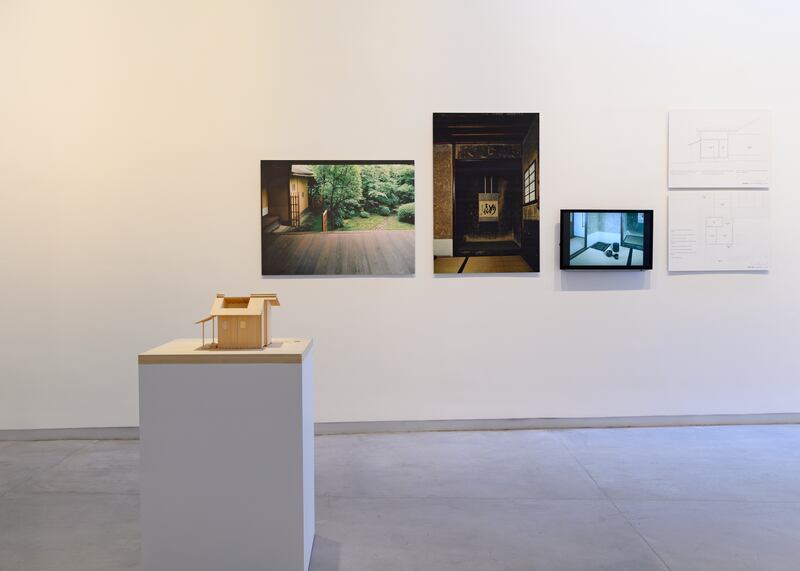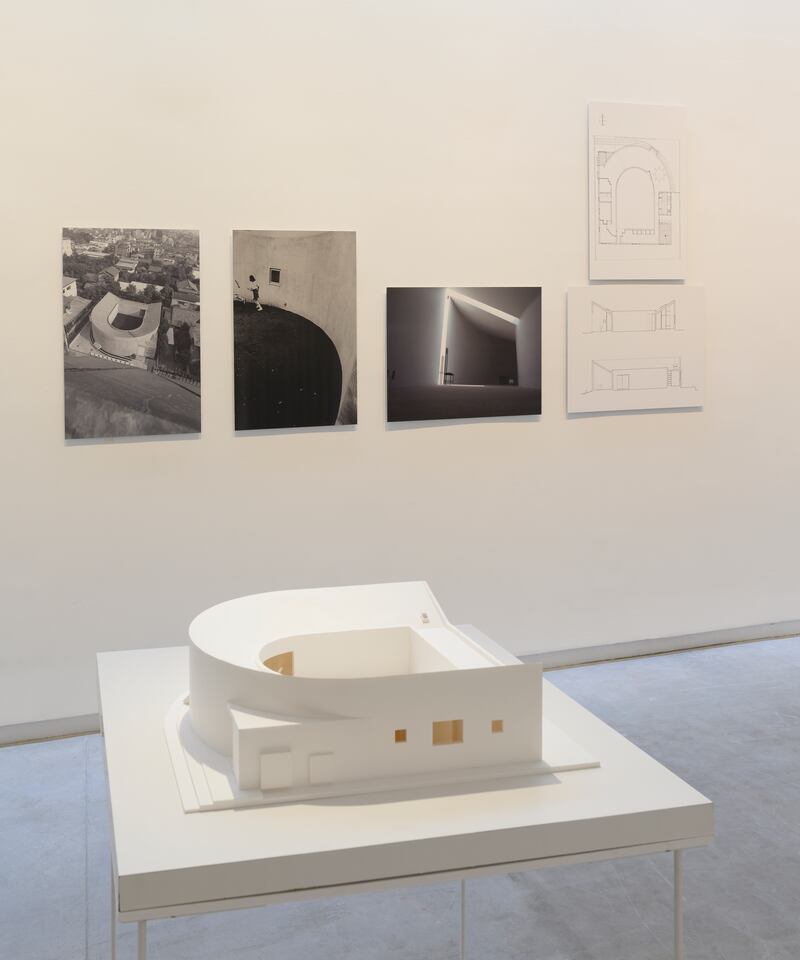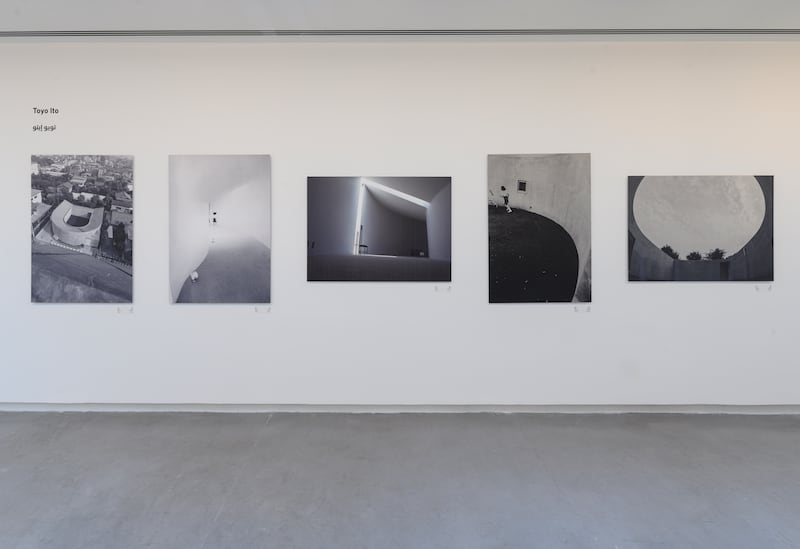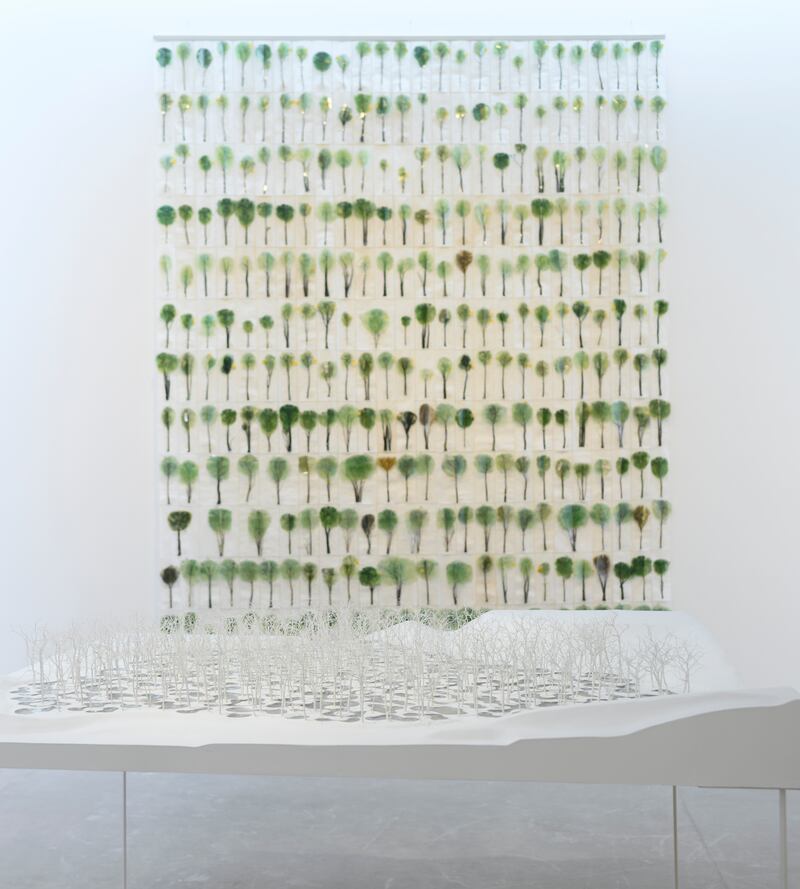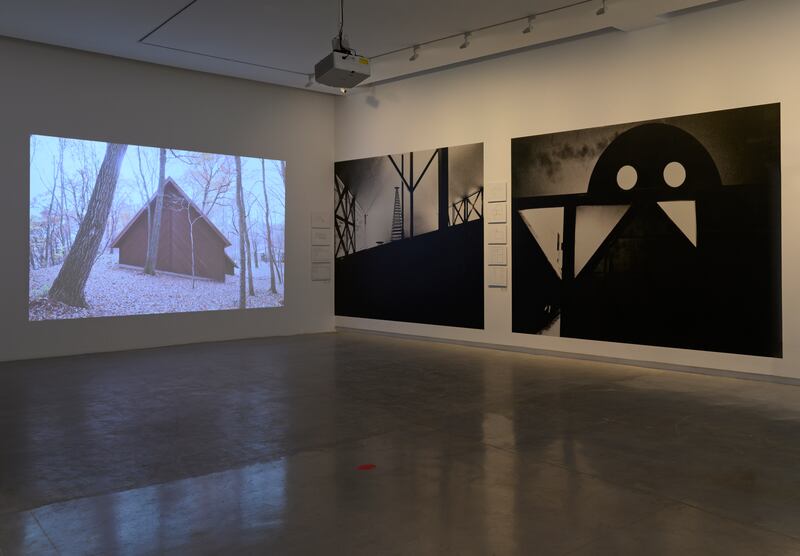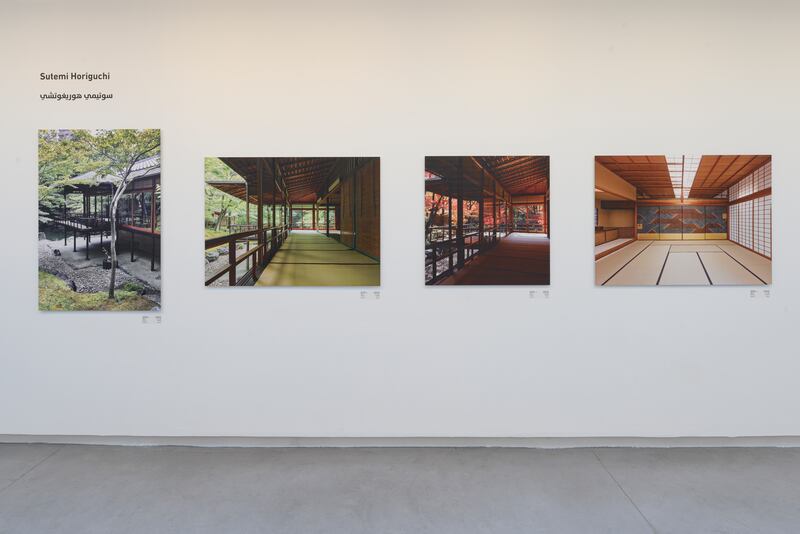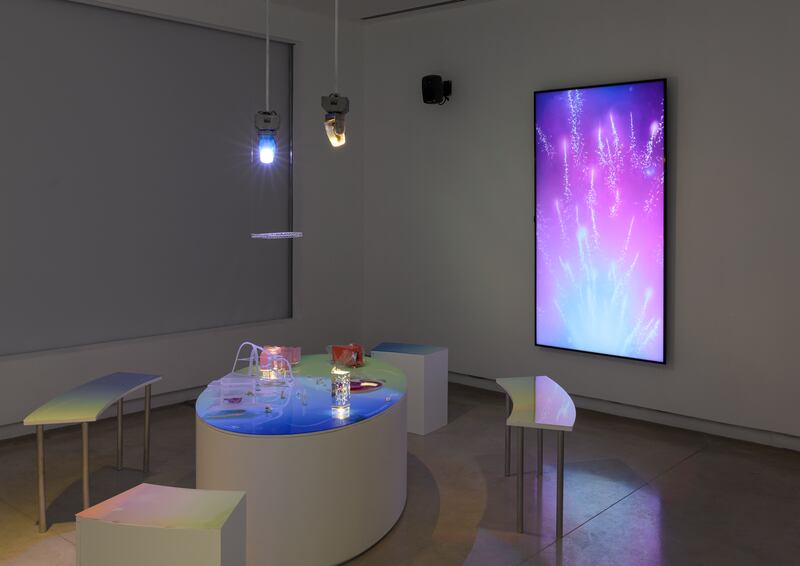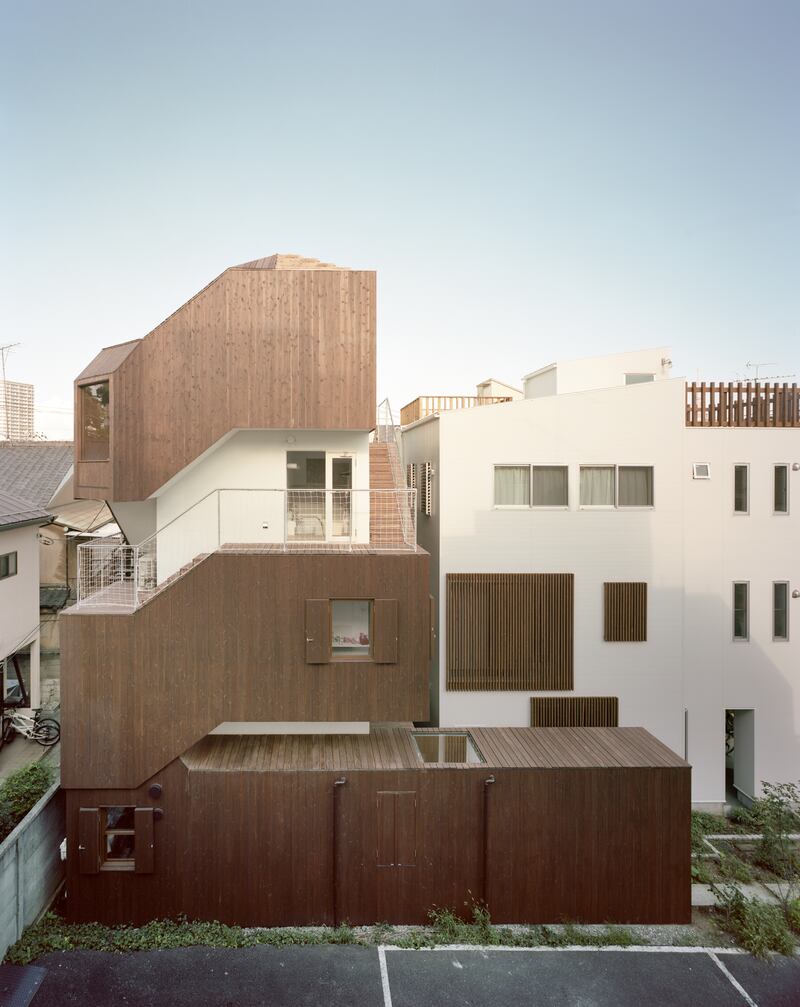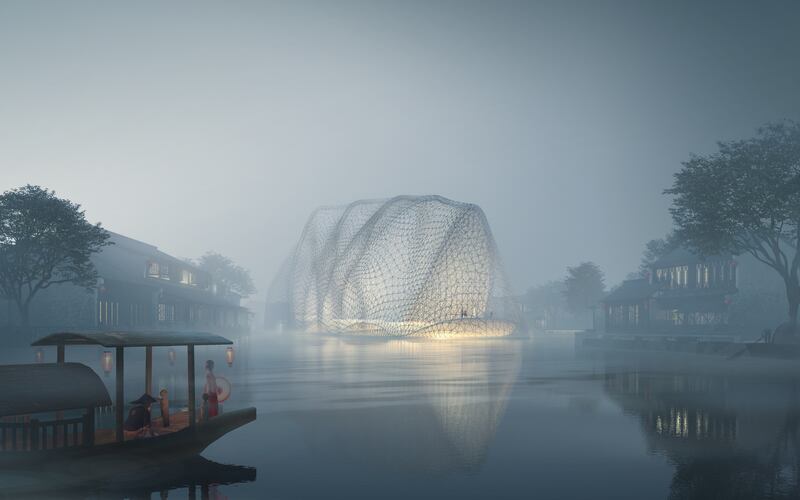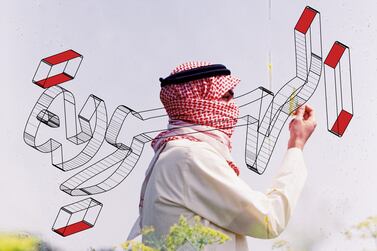Remain calm. It’s an instruction commonly used in emergency situations and evacuations. Meant to encourage compliance and prevent panic, the phrase can also exist as a kind of mantra to stay present, a plea for steadiness in chaos.
It’s a fitting subtitle for the ongoing Sharjapan 3 exhibition at the Sharjah Art Foundation, which offers a meaningful look at architecture’s role in providing us with spaces for rest, tranquility, healing and connection, particularly in the age of a global pandemic and the climate crisis.
Now in its last week, Sharjapan 3 – Remain Calm: Solitude and Connectivity in Japanese Architecture, is the third in a four-year series that brings aspects of Japanese culture to the UAE. Previous shows, for example, have explored book design and performance art.
Sharjapan is curated by Yuko Hasegawa, who also curated the Sharjah Biennial 11 in 2013 and is the director of the 21st Century Museum of Contemporary Art in Kanazawa, Japan.
Featuring scale models of architectural projects in Japan, photographs and multimedia installations, Remain Calm takes inspiration from the 12th-century Japanese poet Kamo no Chomei, who became a hermit and travelled in his small, mobile hut to live on hillsides and by riversides.
For Hasegawa, Chomei’s shelter reflects much of what we require from living spaces in the midst of the pandemic – how can we create a place of safety, while still remaining connected to our surroundings?
The oscillation between solitude and connectivity is present in the architectural projects highlighted in Sharjapan 3, including in architect Kazuo Shinohara’s Tanikawa House, located in the mountains of Nagano prefecture and built in 1974.
Minimal in design, the summer house sits on the slope of a hill, its flooring only partially covered, leaving the ground exposed in certain areas. By keeping the earth and the artificial in close proximity to one another, Shinohara’s design almost dissolves the barrier between the two, as though the inhabitants were now part of the natural surroundings, instead of simply living in it.
When lockdowns were set in place across the world in 2020, gardens, balconies and rooftops became prized spaces as people sought some form of dialogue with their surroundings. Even as cities and countries reopen, the anxieties of quarantine in enclosed spaces have left a deep mark, and future architectural projects may be able to find solutions.
Sharjapan 3 also proposes ways in which architecture can be sites of healing. A scale model of Toyo Ito’s White U from 1976 shows how the architect created a shelter for his sister Nobuko, who was widowed, and her two daughters.
The all-white structure appeared enclosed from the outside, but its absence of dividing walls on the inside permitted more contact between family members. Like Shinohara’s design, a portion of the house, specifically its central courtyard, was left unpaved, so that the soil and vegetation were left exposed.
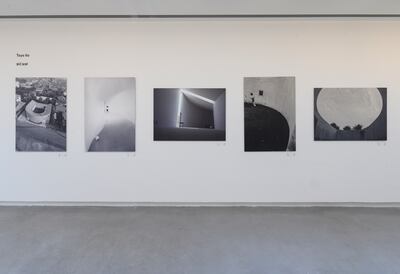
During its existence – the house was demolished in 1997 after the residents felt that they had outgrown it – White U perched between its function as a kind of fortress, enabling solitude and recovery, and a communal, open space for its inhabitants.
What also emerges in Hasegawa’s selection of architectural projects is the emphasis in Japanese architecture on responding to surroundings, whether it is the natural environment or in urban contexts.
The Art Biotop Water Garden by Junya Ishigami exemplifies this consideration for nature, having been designed to save forest trees from being cut down for a new hotel. Over four years, a total of 318 trees were relocated to a meadow next to the hotel site. The architect then designed 160 biotopes, or artificial ponds, to surround the trees and serve as homes for various flora and fauna.
In urban settings, the Double Helix House, designed by onishimaki+hyakudayuki (o+h) architects, demonstrates imagination and an understanding of space, even in limited circumstances. Built in a very narrow area of a Tokyo neighbourhood, the house is accessed through an alley, its various living areas stacked on top of each other with a winding corridor around its central core.
Remain Calm also includes a performative installation by artist Nile Koetting named Remain Calm (Compressed +), from which Hasegawa drew the exhibition’s subtitle. The artist recalls the evacuation drills from his childhood in Japan, where schools prepare for natural disasters such as earthquakes and tsunamis.
Koetting’s installation of miniature models depicts an art institution – set in a science fictional universe – in a state of emergency. The work contemplates on the types of solidarity that could take shape under such instances. The work takes on even more contemporary resonance as climate disasters, including deadly floods and wildfires, have struck several countries this year alone.
How has architecture served to protect us thus far, and how can architects, designers, urban planners, environmentalists and governments adapt and rethink moving forward? Can art institutions and museums also play a role?
Such key questions arise repeatedly throughout the show, which also includes beautiful photographs of various Japanese architecture in one gallery. Remain Calm proves that an ethos of compassion, care and harmony can exist within architecture, without stripping it of functionality or beauty.
At the same time, the projects within the show act as reminders of the possibilities of architecture outside of vanity and grandeur, aspirations that go hand in hand with cities vying for global dominance. It is timely that the show should end just as Expo 2020 Dubai, with its promises of magnificence and spectacle, takes centre stage.
Above all, Remain Calm reinforces a belief in architecture’s ability to fulfil the spiritual and emotional needs of its inhabitants. That, at its roots, architecture should be human.
Sharjapan 3 – Remain Calm: Solitude and Connectivity in Japanese Architecture is on view at Galleries 1, 2, and 3, Al Mureijah Square, Sharjah Art Foundation. More information on sharjahart.org
